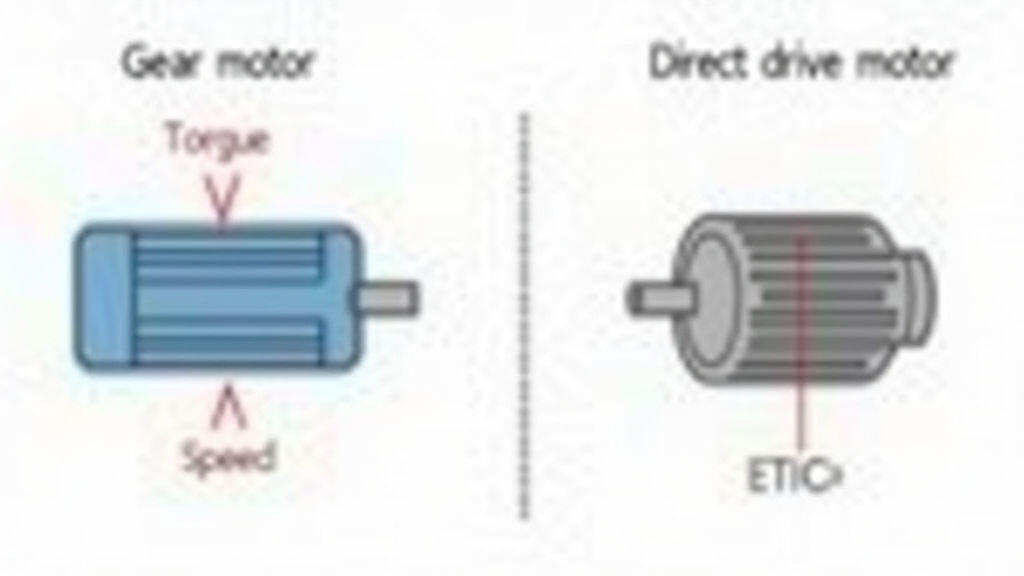
Modern medical devices—from infusion pumps to surgical robots—depend on precise, reliable movements. The type of motor that drives these movements can dramatically affect performance, durability, and safety. In most upgrades, engineers face a simple but critical question: should we keep the existing regular (direct-drive) motor, or replace it with a gear motor that offers finer control? Misclassifying a motor can lead to over‑tuning, overheating, or, in worst case, equipment failure.
Because the healthcare industry is highly regulated, the stakes are higher than in consumer electronics. A successful upgrade must demonstrate that the chosen motor remains compliant with ISO 13485, IEC 60601, and FDA safety guidelines. Therefore, engineers must adopt a systematic configuration strategy that separates gear motors from regular motors based on functional requirements, mechanical constraints, and risk analysis.
Knowing these trade‑offs helps decision makers spot the right motor for specific upgrades—whether it’s a lightweight infusion pump or a high‑force surgical actuator.
1. Define the Functional Profile
Begin by listing the required motion attributes: desired range of motion, peak torque, speed, resolution, and operational duty cycle. If the application demands very high torque at low speed (e.g., a large orthopedic actuator), a gear motor might be advantageous. For rapid, fine‑adjustment tasks (like dial-setting on a monitoring device), a regular motor is preferable.
2. Map Performance to Motor Characteristics
Use the motor catalog or manufacturer data sheets to create a performance matrix. Compare torque-speed curves, heat signature, and noise levels. Units of measurement should remain the same (e.g., mm/s for speed, Nm for torque) to simplify comparison.
3. Conduct a Risk Assessment
Apply a lightweight Failure Modes and Effects Analysis (FMEA). Identify critical failure modes that differentiate gear and regular motors: gear wear, backlash-induced oscillations, overheating, or electrical faults. Assign severity scores and mitigation measures—like adding temperature sensors for gear motors or filtering signals for regular motors.
4. Prototype and Test
Integrate a small number of candidate motors into a laboratory test rig. Measure actual torque, step response, positional repeatability, temperature rise, and power consumption. Document any deviations between datasheet values and real-world performance.
5. Verify Regulatory Compliance
Before final selection, compare the prototype results against ISO 13485’s risk management and IEC 60601’s performance criteria. For gear motors, ensure the gear train does not violate vibration or noise limits set by the standard. For regular motors, confirm that electrical isolation and ground-fault protection meet the required safety classes.
6. Final Configuration and Documentation
Once the motor type is chosen, update the system’s configuration file with details such as motor ID, control algorithm parameters, and servo loops. Generate a configuration report that includes a side‑by‑side comparison sheet, FMEA outcomes, and compliance certificates.
A small medical device company was modernizing its line of infusion pumps. The existing pumps used low‑torque, direct‑drive motors that struggled with the heavier fluid viscosity of its new product. The engineering team contemplated switching to gear motors.
By applying the six-step strategy:
After the upgrade, the pump delivered consistent flow rates, increased durability by 25%, and reduced warranty claims by 30%—a clear illustration of a well‑planned motor upgrade.

The trend is moving toward motors that combine the benefits of both gear and direct drive. Electromagnetically tuned gear motors now feature variable, electronically controlled gear ratios, eliminating mechanical backlash. Meanwhile, brushless direct‑drive motors with integrated temperature monitoring and predictive maintenance algorithms are gaining traction in devices that demand both high torque and ultra‑precision.
Moreover, the adoption of micro‑turbine actuators—small, high‑speed motors that produce significant torque through a different mechanical principle—offers new possibilities for next‑generation portable medical devices. These innovations will likely smooth the line between the two traditional categories, allowing engineers to focus more on functional needs than on motor types.
Configuration strategies that clearly differentiate between gear motors and regular motors can transform an equipment upgrade from a risky gamble into a systematic, compliant, and performance‑driven process. By defining functional profiles, mapping outcomes, conducting rigorous risk assessments, and validating through prototypes and regulatory checks, engineers ensure that each motor selection aligns with both clinical reliability and safety standards.
As the medical device landscape continues to evolve, the ability to make informed motor decisions—supported by robust data and clear documentation—will remain a pivotal factor in delivering devices that meet today’s demands and prepare for tomorrow’s innovations.
Leave A Reply
Your email address will not be published. Required fiels are marked